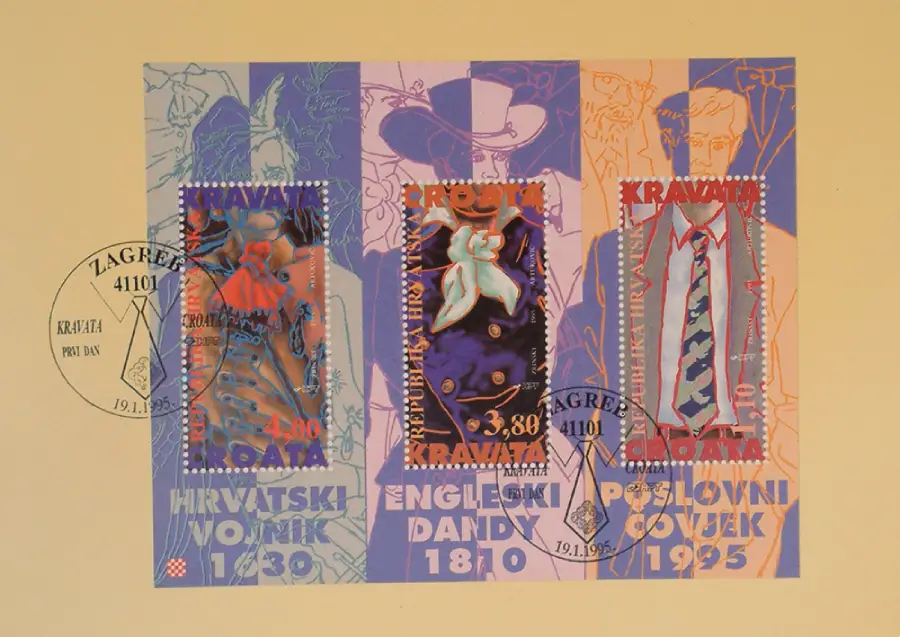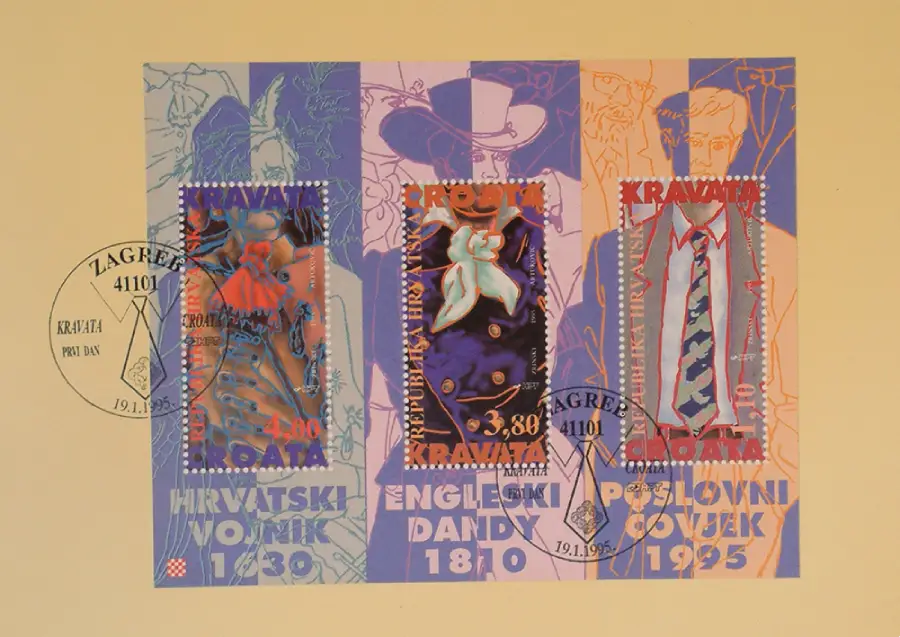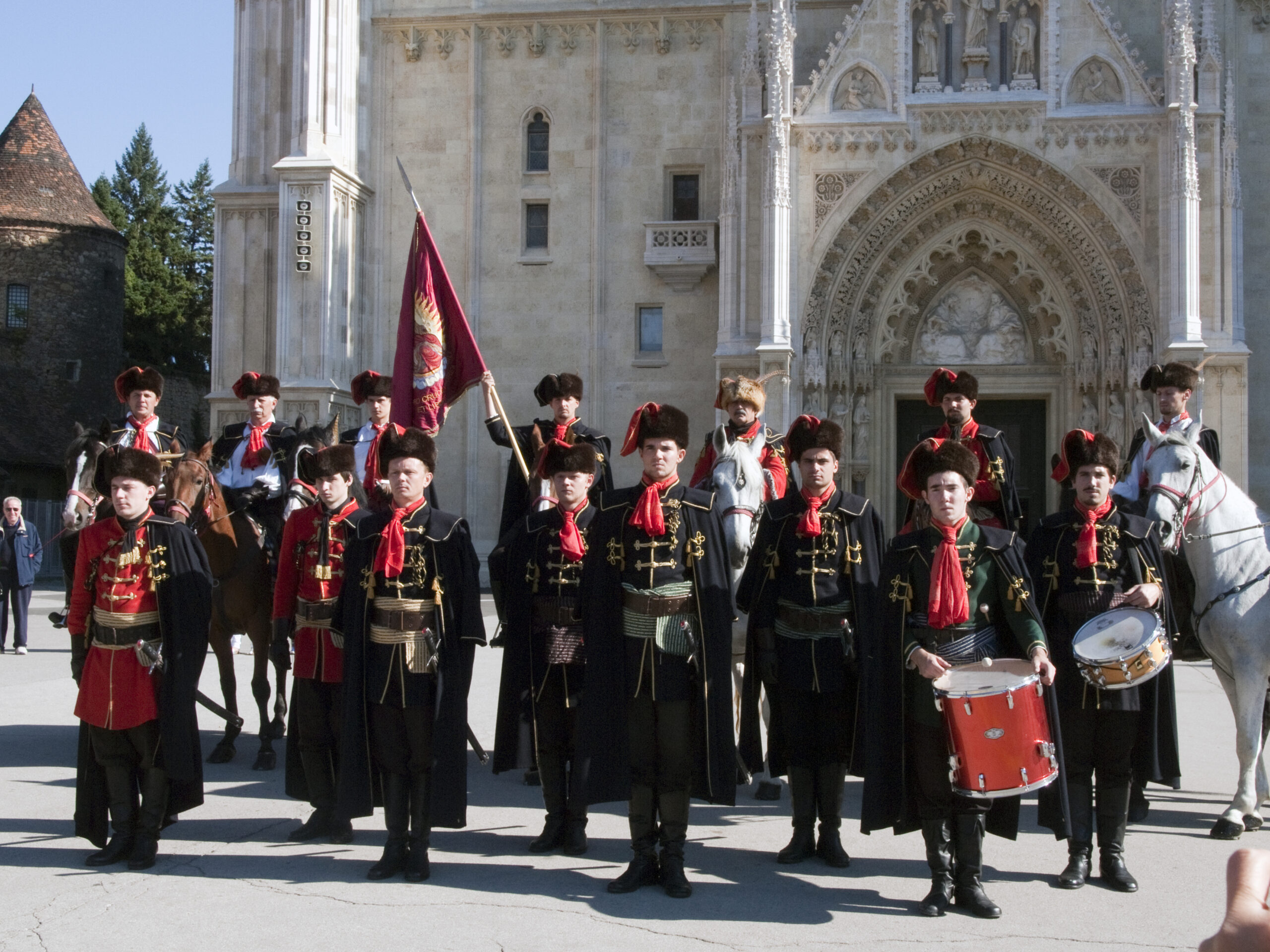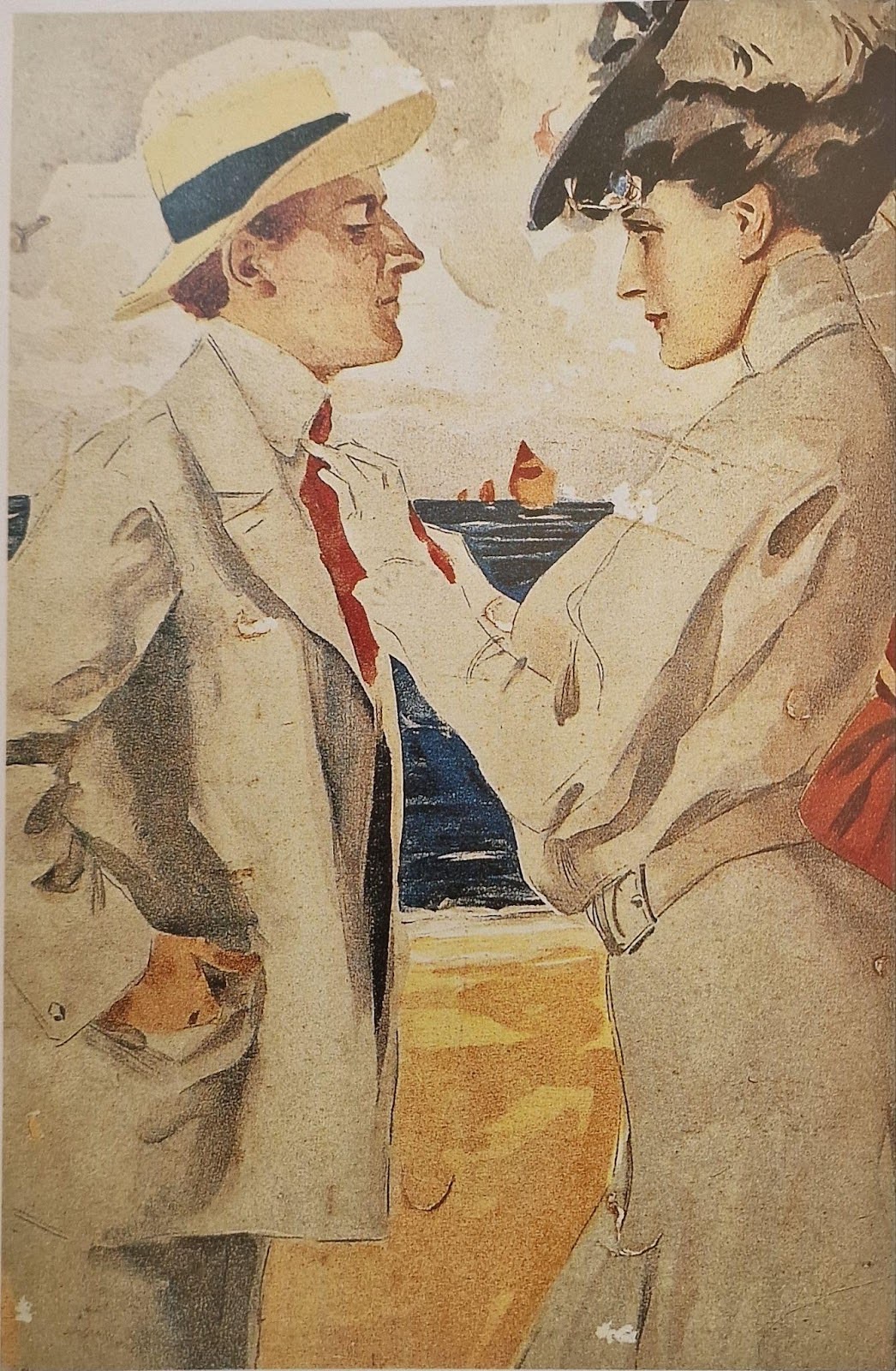Sometimes history and art fit onto a surface no larger than a fingernail.
A postage stamp is never just a slip of paper – it is a miniature painting, a traveling gallery piece carrying culture across borders.
In 1995, philately became the stage for one of fashion’s most symbolic stories: the cravat. A special series entitled “Cravat – Croata” was issued, presenting three chapters of its evolution. One stamp depicted the kerchief of 17th-century horsemen, another the refined folds of an English dandy’s cravat from 1810, and the third the tie of the modern businessman. The visual concept was created by Zagreb painter Lovro Artuković, who translated the cravat into a work of art available to everyone – not in museums, but on every letter that journeyed across the world.
These stamps proved that philately can be both communication and art. After their release, interest extended far beyond collectors. The luxury Taiwanese magazine C’est moi requested official reproductions for an article on the cravat. Alongside the images, they received a photograph of the Roman Arena in Pula draped with a giant cravat – resulting in a lavish feature that linked fashion, history, and art, all through the small frame of a postage stamp.
The cravat itself has taken many forms through the centuries – from kerchief to high collar, from bow tie to the long modern necktie. But in this stamp series, its transformation was condensed into three images, like a miniature triptych, a portable exhibition.













